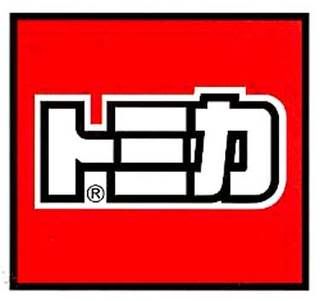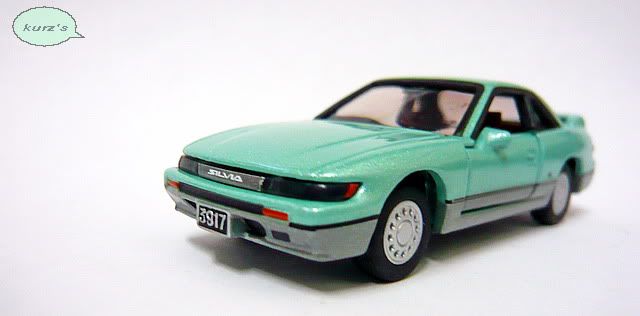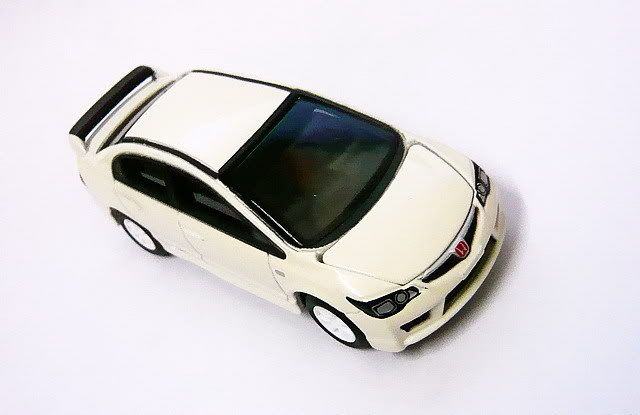From Wikipedia
Tomica (トミカ) is the line of die-cast toy vehicles and related products produced by Takara Tomy Co. of Japan(formerly known as Tomy Co.). This is not the same as Tomica World, which is a line of motorized trains and vehicles and accessories that Tomy Co. of UK has produced since the late 1990s. Tomica World motorized trains and track systems are based on Plarail, which is the brand of motorized toy trains that Tomy Co. of Japan has produced since 1959[1], but Tomica World more heavily focuses on Thomas & Friends trains. However, the motorized vehicles of Tomica World are the same as Motor Tomica, which will be explained below.
HistoryTomy Co. of Japan (referred to as “Tomy” for the rest of this article) was founded in 1924[1] and produced various toys throughout its existence, but it’s not until 1970 when they realized the surge of interest in die-cast cars that they started to produce Tomica. Although Tomica of various scales have been made, the term “Tomica” when used alone refers to the 3-inch models. Regular Tomica refers to the mainstream Tomica sold at the regular price—domestic series, foreign series, or common series, depending on the time of release.
The Typical 3-Inch TomicaTomica Domestic Series (“Black Box”/“Red-and-White Box”)

Initially, Tomy only produced Japanese cars. This started out with the concurrent release of 6 models in 1970. The seventh model was issued later in 1970. From then on, the Tomica line grew in number until there was a total of 109 concurrently-sold models in 1978—no.1 – 108 plus no.110. The first no.109 model was proposed and seen in catalogue but was never realized. The variety of models also expanded from the initial coupes and saloons to taxis, buses, lorries, work vehicles and other commercial vehicles, to even steam engine and an ocean cruiser. As new models were issued, each was assigned a number within 1 to 110, thus replacing the existing model. The replaced model was called a discontinued model. In the early 1980’s, Tomy experienced financial difficulties. Subsequently, the domestic model line was down sized to only 80 models (no.1 – 80) in 1983. These models were mainly packaged in picture boxes. At first, the boxes used a black background. Since 1984, each new model came with a new style box with red-and-white background, while existing models issued before 1984 kept using the older style box with black background until 1988, when all boxes were updated to the new style. Hence, domestic models are commonly referred to as the “black box” or “red-and-white Box” models depending on their boxes.
Tomica Foreign Series (“Blue-and-White Box”)
"Pocket Cars" for the North American market.

To share a piece of the toy car market in the other parts of the world, Tomy had great plans of exporting their models early on, and this was done starting in 1974 with the appearance of “Tomy Pocket Cars” in Canada and the United States of America. But as they found out, Japanese cars weren’t good sellers overseas, so Tomy started producing “foreign” models in 1976. These models included cars from countries outside of Japan and hence they’re “foreign” models. American, German, Italian, British, French, and cars from other countries could be found, making the Tomica product line more colourful. For the ones sold domestically in Japan, their packaging was equally colourful. Each foreign series car was packaged in a picture box that showed a flag of the country of that particular car. Since these boxes have the base colours of blue and white, they are also called the “blue-and-white box” models. At any one time, a total of 70 models were produced under the foreign line, numbered F1 to F70. The same rules for numbering domestic models apply here as well.
Tomica Common Series (“Red-and-White Box”)
In 1988, Tomy combined their foreign models into the domestic series. Hence, we could no longer call it the "domestic" series. Most of the first 40 models from the foreign series were added to the 80 domestic models. Those foreign models that got transferred were assigned a number that was its F series number plus 80. A handful of these foreign models were discontinued after a few months’ appearance under the new line. And about half of them had been discontinued after just two years. To date, the regular line Tomica has been numbered this way, 1 to 120.
Tomica Limited Series
Starting in 2001, Tomy produces the TL series targeted for the collector. These models are made with higher details, and one of their biggest features is realistic-looking wheels with rubberized plastic tyres. Although many of them are based on existing or discontinued regular Tomica models, some are new castings made exclusively for the TL line, namely, Nissan Skyline GTB, Toyoda AA, and new MINI Cooper. And in the case of the new MINI Cooper, the model is first released for the TL series in 2004 but later on in 2006 included in the regular line as no.43, which is opposite to what normally happens. Number started at 0001. Each model is produced for a limited period of time, so models with smaller numbers are discontinued while new models with higher numbers continue to appear. These models are packaged in open cardboard boxes surrounded on four sides with a transparent plastic sleeve.
Special Models
Tomica has produced a number of special models over the years. Herein, special model means a unique model that is not and has never been found in the regular line or the Limited Series.
This post has been edited by loon1031: May 9 2009, 11:13 AM 



 May 9 2009, 10:26 AM, updated 13y ago
May 9 2009, 10:26 AM, updated 13y ago
 Quote
Quote




















 0.0265sec
0.0265sec
 0.60
0.60
 6 queries
6 queries
 GZIP Disabled
GZIP Disabled